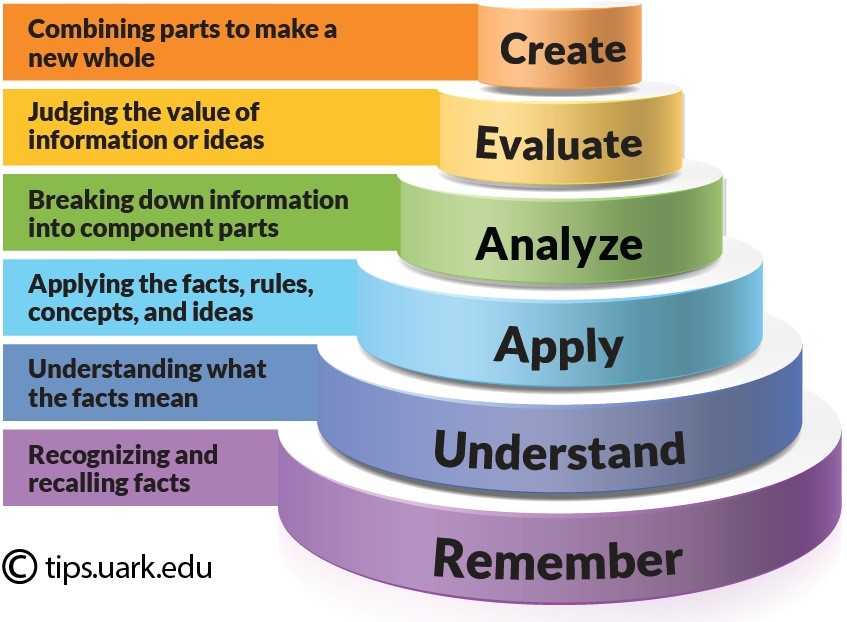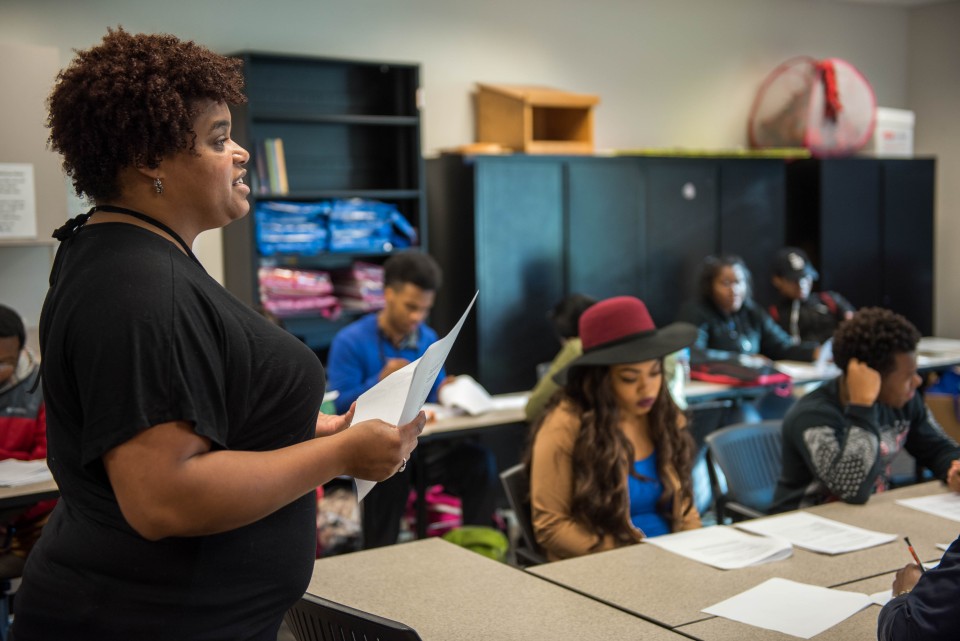

Professor Hollie Nyseth Brehm was a graduate student the first time she taught a class, “I didn’t have any training on how to teach, so I assigned a final paper and gave them instructions: ‘Turn it in at the end of course.’ That was sort of it.”
Brehm didn’t have a rubric or a process to check in with students along the way. Needless to say, the assignment didn’t lead to any major breakthroughs for her students. But it was a learning experience for Brehm. As she grew her teaching skills, she began to carefully craft assignments to align to course goals, make tasks realistic and meaningful, and break down large assignments into manageable steps.
"Now I always have rubrics. … I always scaffold the assignment such that they’ll start by giving me their paper topic and a couple of sources and then turn in a smaller portion of it, and we write it in pieces. And that leads to a much better learning experience for them—and also for me, frankly, when I turn to grade it .”
Reflect
Have you ever planned a big assignment that didn’t turn out as you’d hoped? What did you learn, and how would you design that assignment differently now?
What are students learning in your class? Are they meeting your learning outcomes? You simply cannot answer these questions without assessment of some kind.
As educators, we measure student learning through many means, including assignments, quizzes, and tests. These assessments can be formal or informal, graded or ungraded. But assessment is not simply about awarding points and assigning grades. Learning is a process, not a product, and that process takes place during activities such as recall and practice. Assessing skills in varied ways helps you adjust your teaching throughout your course to support student learning

Research tells us that our methods of assessment don’t only measure how much students have learned. They also play an important role in the learning process. A phenomenon known as the “testing effect” suggests students learn more from repeated testing than from repeated exposure to the material they are trying to learn (Karpicke & Roediger, 2008). While exposure to material, such as during lecture or study, helps students store new information, it’s crucial that students actively practice retrieving that information and putting it to use. Frequent assessment throughout a course provides students with the practice opportunities that are essential to learning.
In addition we can’t assume students can transfer what they have practiced in one context to a different context. Successful transfer of learning requires understanding of deep, structural features and patterns that novices to a subject are still developing (Barnett & Ceci, 2002; Bransford & Schwartz, 1999). If we want students to be able to apply their learning in a wide variety of contexts, they must practice what they’re learning in a wide variety of contexts.
Providing a variety of assessment types gives students multiple opportunities to practice and demonstrate learning. One way to categorize the range of assessment options is as formative or summative.
Opportunities not simply to practice, but to receive feedback on that practice, are crucial to learning (Ambrose et al., 2010). Formative assessment facilitates student learning by providing frequent low-stakes practice coupled with immediate and focused feedback. Whether graded or ungraded, formative assessment helps you monitor student progress and guide students to understand which outcomes they’ve mastered, which they need to focus on, and what strategies can support their learning. Formative assessment also informs how you modify your teaching to better meet student needs throughout your course.
Technology Tip
Design quizzes in CarmenCanvas to provide immediate and useful feedback to students based on their answers. Learn more about setting up quizzes in Carmen.
Summative assessment measures student learning by comparing it to a standard. Usually these types of assessments evaluate a range of skills or overall performance at the end of a unit, module, or course. Unlike formative assessment, they tend to focus more on product than process. These high-stakes experiences are typically graded and should be less frequent (Ambrose et al., 2010).

Bloom’s Taxonomy is a common framework for thinking about how students can demonstrate their learning on assessments, as well as for articulating course and lesson learning outcomes.
Benjamin Bloom (alongside collaborators Max Englehart, Edward Furst, Walter Hill, and David Krathwohl) published Taxonomy of Educational Objectives in 1956. The taxonomy provided a system for categorizing educational goals with the intent of aiding educators with assessment. Commonly known as Bloom’s Taxonomy, the framework has been widely used to guide and define instruction in both K-12 and university settings. The original taxonomy from 1956 included a cognitive domain made up of six categories: Knowledge, Comprehension, Application, Analysis, Synthesis, and Evaluation. The categories after Knowledge were presented as “skills and abilities,” with the understanding that knowledge was the necessary precondition for putting these skills and abilities into practice.
A revised Bloom's Taxonomy from 2001 updated these six categories to reflect how learners interact with knowledge. In the revised version, students can: Remember content, Understand ideas, Apply information to new situations, Analyze relationships between ideas, Evaluate information to justify perspectives or decisions, and Create new ideas or original work. In the graphic pictured here, the categories from the revised taxonomy are imagined as the layers of a cake.
Assessing students on a variety of Bloom's categories will give you a better sense of how well they understand your course content. The taxonomy can be a helpful guide to predicting which tasks will be most difficult for students so you can provide extra support where it is needed. It can also be used to craft more transparent assignments and test questions by honing in on the specific skills you want to assess and finding the right language to communicate exactly what you want students to do. See the Sample Bloom's Verbs in the Examples section below.
Diving deeper into Bloom's Taxonomy
Like most aspects of our lives, activities and assessments in today’s classroom are inextricably linked with technology. In 2008, Andrew Churches extended Bloom’s Taxonomy to address the emerging changes in learning behaviors and opportunities as “technology advances and becomes more ubiquitous.” Consult Bloom’s Digital Taxonomy for ideas on using digital tools to facilitate and assess learning across the six categories of learning.
Did you know that the cognitive domain (commonly referred to simply as Bloom's Taxonomy) was only one of three domains in the original Bloom's Taxonomy (1956)? While it is certainly the most well-known and widely used, the other two domains—psychomotor and affective—may be of interest to some educators. The psychomotor domain relates to physical movement, coordination, and motor skills—it might apply to the performing arts or other courses that involve movement, manipulation of objects, and non-discursive communication like body language. The affective domain pertains to feelings, values, motivations, and attitudes and is used more often in disciplines like medicine, social work, and education, where emotions and values are integral aspects of learning. Explore the full taxonomy in Three Domains of Learning: Cognitive, Affective, and Psychomotor (Hoque, 2017).
Consider the following to make your assessments of student learning effective and meaningful.
It goes without saying that you want students to achieve the learning outcomes for your course. The testing effect implies, then, that your assessments must help them retrieve the knowledge and practice the skills that are relevant to those outcomes.
Plan assessments that measure specific outcomes for your course. Instead of choosing quizzes and tests that are easy to grade or assignment types common to your discipline, carefully consider what assessments will best help students practice important skills. When assignments and feedback are aligned to learning outcomes, and you share this alignment with students, they have a greater appreciation for your course and develop more effective strategies for study and practice targeted at achieving those outcomes (Wang, et al., 2013).

Consider how far removed from “the real world” traditional assessments like academic essays, standard textbook problems, and multiple-choice exams feel to students. In contrast, assignments that are authentic resemble real-world tasks. They feel relevant and purposeful, which can increase student motivation and engagement (Fink, 2013). Authentic assignments also help you assess whether students will be able to transfer what they learn into realistic contexts beyond your course.
Integrate assessment opportunities that prepare students to be effective and successful once they graduate, whether as professionals, as global citizens, or in their personal lives.
To design authentic assignments:
Simulations, role plays, case studies, portfolios, project-based learning, and service learning are all great avenues to bring authentic assessment into your course.
Your students juggle coursework from several classes, so it’s important to be conscious of workload. Assign tasks they can realistically handle at a given point in the term. If it takes you three hours to do something, it will likely take your students six hours or more. Choose assignments that assess multiple learning outcomes from your course to keep your grading manageable and your feedback useful (Rayner et al., 2016).
For large assignments, use scaffolding to integrate multiple opportunities for feedback, reflection, and improvement. Scaffolding means breaking a complex assignment down into component parts or smaller progressive tasks over time. Practicing these smaller tasks individually before attempting to integrate them into a completed assignment supports student learning by reducing the amount of information they need to process at a given time (Salden et al., 2006).
Scaffolding ensures students will start earlier and spend more time on big assignments. And it provides you more opportunities to give feedback and guidance to support their ultimate success. Additionally, scaffolding can draw students’ attention to important steps in a process that are often overlooked, such as planning and revision, leading them to be more independent and thoughtful about future work.
A familiar example of scaffolding is a research paper. You might ask students to submit a topic or thesis in Week 3 of the semester, an annotated bibliography of sources in Week 6, a detailed outline in Week 9, a first draft on which they can get peer feedback in Week 11, and the final draft in the last week of the semester.
Your course journey is decided in part by how you sequence assignments. Consider where students are in their learning and place assignments at strategic points throughout the term. Scaffold across the course journey by explaining how each assignment builds upon the learning achieved in previous ones (Walvoord & Anderson, 2011).
Communicate clearly to students about the purpose of each assignment, the process for completing the task, and the criteria you will use to evaluate it before they begin the work. Studies have shown that transparent assignments support students to meet learning goals and result in especially large increases in success and confidence for underserved students (Winkelmes et al., 2016).
To increase assignment transparency:

Engage students in reflection or discussion to increase assignment transparency. Have them consider how the assessed outcomes connect to their personal lives or future careers. In-class activities that ask them to grade sample assignments and discuss the criteria they used, compare exemplars and non-exemplars, engage in self- or peer-evaluation, or complete steps of the assignment when you are present to give feedback can all support student success.
Technology Tip
Enter all assignments and due dates in your Carmen course to increase transparency. When assignments are entered in Carmen, they also populate to Calendar, Syllabus, and Grades areas so students can easily track their upcoming work. Carmen also allows you to develop rubrics for every assignment in your course.